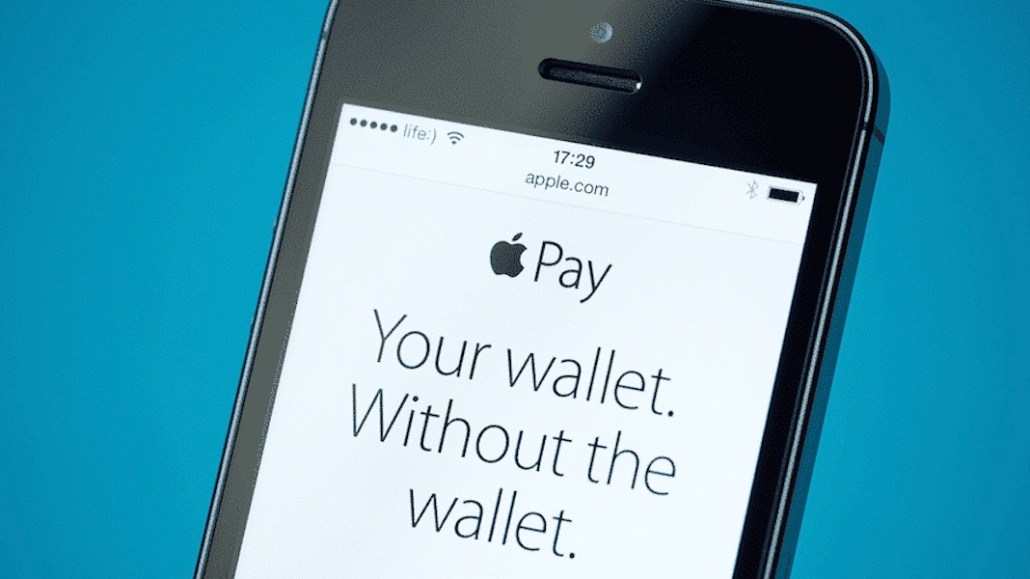

When it comes to mobile payment apps, PayPal is the clear winner in terms of market size: It has more than 180 million active users and 15 million merchants, and is available in over 200 countries.
But it continues to privilege e-commerce and has less of a presence in physical retail stores, said Jason Goldberg, the senior vice president of content and commerce at SapientRazorfish. Apple Pay, on the other hand — which has around 12 million active users — is focused on growing in both spheres, with 36 percent of merchants offering it in store, compared to 34 percent that offer PayPal. Of the retailers who don’t currently support Apple Pay, 22 percent said they plan to accept the service within the next 12 months.
This could lend the payments service some fighting power in the luxury fashion space, where top-tier brands like Céline have been resistant to selling products online.
Apple Pay may be better suited for luxury brands when used online, as well.
Unlike PayPal, Apple is “not trying to be a solution for the entire market, [but rather] a great solution for the subset of the market that uses Apple products,” said Goldberg. That subset of customers is considered to be high value, which makes it perfect for luxury brands looking to offer mobile payment options.
“Apple is a premium brand,” said Stephan Schambach, the founder and chief executive officer of NewStore. “Since its customers have signaled they are willing to spend hundreds of dollars on devices, they are likely to do the same for other goods and experiences.”
Indeed, a recent study from Branding Brand, the retail industry’s leading omnichannel commerce platform, found that, on average, customers who check out with Apple Pay spend 17 percent more than users who checkout with PayPal.
But brand adoption is still comparatively low for the platform: Of the 32 fashion and beauty brands Branding Brand surveyed, 78 percent offer PayPal, while only 6 percent offer Apple Pay. Although it couldn’t cite specifics, PayPal currently has the advantage, partnering with luxury brands like Calvin Klein and Ralph Lauren, according to its website. Apple Pay’s closest equivalent is Barneys New York.
Nevertheless, Apple Pay’s frictionless user experience could drive higher-end brands to hop on board. “It can convert better because there are fewer steps,” said Goldberg, noting that, unlike Apple Pay’s one touch login, PayPal requires users to log in every time they pay, forcing them to leave the shopping site they’re on to complete the checkout process.
Another beneficial feature of Apple Pay is that brands can selectively offer it as a payment option, depending on whether or not a browsing customer actually uses it. A browser cookie sends an API request to Apple to determine whether or not the current user is Apple Pay-enabled or not, and if they are, it will then show up at checkout.
This avoids what Goldberg refers to as “Nascar-ing the checkout,” where certain brands bombard the consumer with too many different payment logos to choose from, prior to making a purchase. “That breadth of logos creates a bunch of friction for users,” said Goldberg.
This is a common phenomenon on sites that offer PayPal, which insists in its contract that partners show their payment option each time. “They’re using retail platforms as advertising to get more customers,” he said. “When you have a customer with $300 in their cart, the last thing you want is to drive them to another site to sign up for a payment app.”
More in Marketing

‘Still not a top tier ad platform’: Advertisers on Linda Yaccarino’s departure as CEO of X
Linda Yaccarino — the CEO who was never really in charge.

Questions swirl after X CEO Linda Yaccarino departs from the platform
Her departure marks the end of two tumultuous years at the platform.

Creator marketing has the reach — CMOs want the rigor
The creator economy got big enough to be taken seriously.








